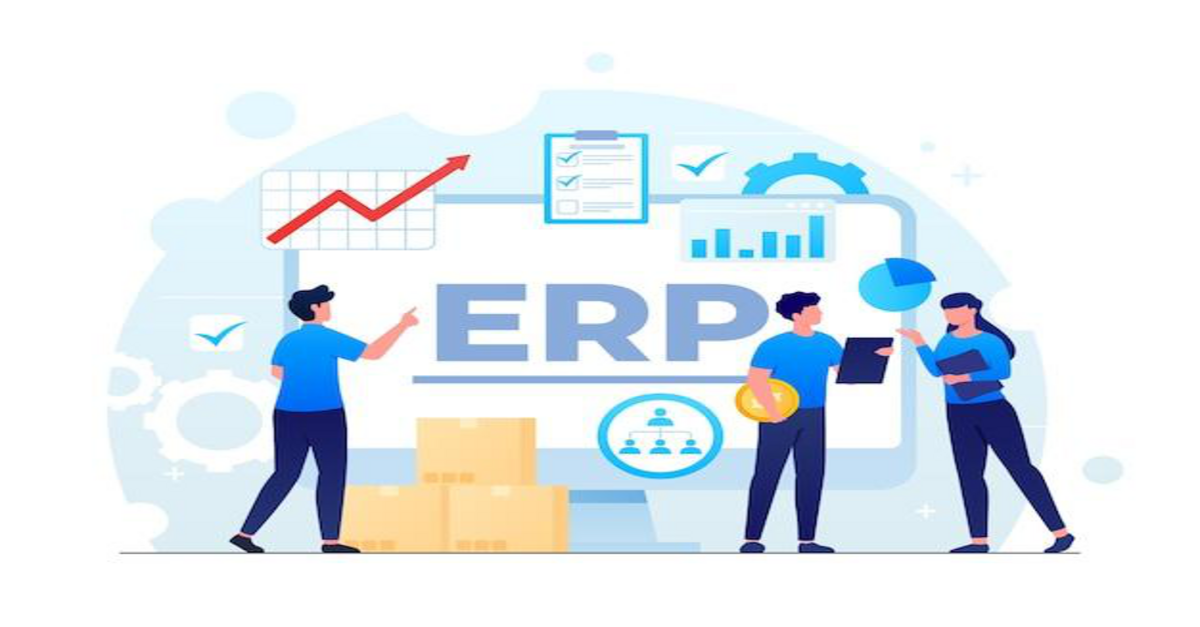In today’s dynamic business landscape, efficient financial management is paramount for success. Choosing the right accounting software can be a complex decision, especially when faced with established players like Sage Intacct, Sage 300, and Microsoft Dynamics GP (formerly Great Plains). In this comprehensive guide, we’re comparing Sage Intacct, Sage 300, Microsoft Dynamics GP to simplify your selection process.
We’ll delve into the core functionalities of Sage Intacct, Sage 300, and Microsoft Dynamics GP, analyzing their strengths and weaknesses in areas like budgeting, reporting, invoicing, and more. Additionally, we’ll be comparing Sage Intacct, Sage 300, Microsoft Dynamics GP by exploring factors like ease of use, scalability, and customization options, helping you determine the ideal fit for your specific business needs.
Understanding Your Business Needs: Comparing Sage Intacct, Sage 300, Microsoft Dynamics GP
Before comparing Sage Intacct, Sage 300, Microsoft Dynamics GP, it’s crucial to clarify your specific financial management requirements. Here are some key questions to consider:
- Company Size and Complexity: Are you a small business with basic accounting needs or a mid-sized company requiring advanced features?
- Industry Requirements: Do you have industry-specific regulations or reporting needs?
- Scalability: Do you anticipate significant growth in the future, necessitating a scalable solution?
- Technical Expertise: Does your team have the technical know-how to manage a complex system?
- Budget: What is your budget for acquiring and implementing a new accounting software?
The Contenders: Comparing Sage Intacct, Sage 300, Microsoft Dynamics GP
Comparing Sage Intacct, Sage 300, Microsoft Dynamics GP requires a clear understanding of each software and how it helps:
- Sage Intacct: Sage Intacct is a leading cloud-based accounting solution designed for mid-sized and large businesses. It boasts a user-friendly interface that simplifies financial management tasks for users of all technical backgrounds. Sage Intacct shines with its robust reporting capabilities, offering real-time data access and customizable dashboards for insightful financial analysis. Additionally, real-time data integration ensures your financial information is always up-to-date, empowering data-driven decision-making.
- Sage 300: Sage 300 is a versatile accounting solution catering to small and mid-sized businesses across various industries. It offers the flexibility of on-premise or cloud deployment, allowing you to choose the option that best suits your IT infrastructure. Sage 300 provides a comprehensive suite of accounting functionalities, including accounts payable and receivable management, inventory control (depending on the chosen version), and financial reporting. Its user-friendly interface and industry-specific features make it a strong contender for businesses seeking a well-rounded accounting solution.
- Microsoft Dynamics GP (Great Plains): Microsoft Dynamics GP (formerly Great Plains) is a well-established on-premise accounting software solution popular among mid-sized businesses. It emphasizes control and customization options, allowing businesses to tailor the software to their specific needs. Microsoft Dynamics GP offers a robust set of accounting functionalities, including budgeting, financial reporting, and project management. However, its on-premise nature may require a more significant IT investment compared to cloud-based solutions.

Recommended Read: Sage Intacct vs. Sage 300: Comprehensive Comparison for Business Owners
Core Functionalities: Comparing Sage Intacct, Sage 300, Microsoft Dynamics GP
Having a clear understanding of your financial management needs is crucial when choosing the right software. Here, we’ll delve deeper into the core functionalities offered by these software systems, comparing Sage Intacct, Sage 300, and Microsoft Dynamics GP (Great Plains) and highlighting their strengths and weaknesses to guide your decision-making process.
1. Budgeting & Forecasting: Charting Your Course
- Sage Intacct: This cloud-based solution takes the lead in budgeting and forecasting when comparing Sage Intacct, Sage 300, Microsoft Dynamics GP. Its intuitive interface allows users to create flexible budget scenarios with real-time data integration. Imagine adjusting your budget based on market fluctuations or sales projections – all reflected instantaneously. Sage Intacct empowers proactive financial planning by enabling you to model different outcomes and make data-driven decisions with greater confidence.
- Sage 300: While not as robust as Sage Intacct, Sage 300 offers budgeting tools with multi-dimensional analysis capabilities. You can analyze your budget by department, product line, or any other relevant category, providing valuable insights into spending patterns. However, for advanced scenario modelling and real-time data integration, Sage 300 may require additional customization.
- Microsoft Dynamics GP: Microsoft Dynamics GP offers basic budgeting functionalities. However, for businesses with complex needs, significant customization might be necessary to achieve advanced features like scenario modelling and real-time data integration. This can be a time-consuming and potentially costly endeavour.
2. Reporting & Analytics: Gaining Financial Clarity
- Sage Intacct: When it comes to comparing Sage Intacct, Sage 300, Microsoft Dynamics GP in terms of reporting and analytics, Sage Intacct shines. Its extensive library of pre-built reports covers various financial aspects, saving you time and effort. Additionally, you can create customizable dashboards to visualize key metrics and gain real-time insights into your financial health. Sage Intacct empowers a data-driven approach to financial management, allowing you to make informed decisions based on clear and current information.
- Sage 300: Sage 300 offers a wide range of standard reports, providing a solid foundation for financial analysis. You also have the ability to create custom reports to suit your specific needs. However, compared to Sage Intacct’s user-friendly interface and pre-built dashboards, Sage 300 might require a steeper learning curve for generating customized reports.
- Microsoft Dynamics GP: Microsoft Dynamics GP provides a decent selection of reports. However, for in-depth analysis and data visualization, you may need to invest in additional development resources. This can be a significant drawback for businesses seeking a comprehensive reporting solution out of the box.
3. Accounts Payable & Receivable: Streamlining Cash Flow
- Sage Intacct: Managing your cash flow efficiently is essential for any business. Sage Intacct streamlines accounts payable and receivable processes with features like automated bill payments, workflow automation, and simplified invoice generation. This translates to faster payments from customers, improved vendor relations, and reduced manual tasks for your team.
- Sage 300: Sage 300 offers efficient accounts payable and receivable functionalities, allowing you to automate payments, generate electronic invoices, and access reporting capabilities. While it provides a solid foundation, Sage 300’s automation features may not be as comprehensive as those found in Sage Intacct.
- Microsoft Dynamics GP: Microsoft Dynamics GP provides solid tools for managing accounts payable and receivable. However, it may lack the advanced automation features offered by Sage Intacct. This can lead to inefficiencies in managing cash flow, requiring more manual intervention and potentially delaying payments or invoices.

4. Inventory Management (if applicable): Keeping Track of Your Stock
- Sage Intacct: For businesses with complex inventory needs, Sage Intacct integrates seamlessly with third-party inventory management solutions. This allows you to leverage specialized features beyond its core functionalities, ensuring optimal stock control and efficient warehouse operations.
- Sage 300: Sage 300 offers basic inventory management capabilities, including tracking stock levels, managing purchase orders, and generating inventory reports. However, for businesses requiring advanced features like barcode scanning, multi-location inventory management, or lot tracking, additional add-ons might be necessary, increasing overall software costs.
- Microsoft Dynamics GP: Microsoft Dynamics GP offers a robust inventory management module catering to businesses with intricate inventory tracking requirements. It provides features like cycle counting, advanced forecasting, and serialized inventory management. However, this complexity can also translate to a steeper learning curve and potentially higher implementation costs.
5. Ease of Use & Learning Curve: Getting Up and Running Quickly
- Sage Intacct: Known for its intuitive interface and user-friendly design, Sage Intacct boasts a shorter learning curve for new users. Its cloud-based nature eliminates the need for complex software installation, allowing your team to get up and running quickly.
- Sage 300: Sage 300 offers a user-friendly interface as well. However, depending on your chosen deployment option (on-premise or cloud), additional configuration may be required. This can add some time to the initial setup process.
- Microsoft Dynamics GP: Microsoft Dynamics GP’s traditional interface and on-premise setup may have a steeper learning curve compared to the cloud-based solutions offered by Sage Intacct and Sage 300. This can lead to longer training times for your team and potentially hinder user adoption.

6. Scalability & Customization: Adapting to Your Growth
- Sage Intacct: As a cloud-based solution, Sage Intacct is highly scalable. It can easily adapt to your business growth by adding new users or functionalities without significant infrastructure changes. Customization options are available through integrations and configuration settings, allowing you to tailor the software to your specific needs.
- Sage 300: Sage 300 offers both on-premise and cloud deployment options, providing some flexibility for businesses. However, customization requires development work, which can be time-consuming and expensive, especially for complex modifications.
- Microsoft Dynamics GP: Microsoft Dynamics GP is limited to on-premise deployment, which can restrict scalability for businesses experiencing rapid growth. While it allows for extensive customization through third-party developers, this approach can be costly and require additional IT resources to manage the on-premise infrastructure.
7.Cost & Implementation
- Sage Intacct: Sage Intacct uses a subscription-based pricing model, with costs varying depending on your company size and chosen features. Implementation costs can also vary depending on the complexity of your setup and the need for customization.
- Sage 300: Sage 300 licensing and implementation costs depend on your chosen deployment option (on-premise or cloud) and the functionalities you require. On-premise deployments typically involve higher initial costs for hardware and software licenses, while cloud deployments offer a more predictable subscription model.
- Microsoft Dynamics GP: Microsoft Dynamics GP licensing and implementation costs typically fall on the higher end due to its on-premise nature and potential customization needs. Additionally, ongoing maintenance costs for the on-premise infrastructure can add to the overall expense.
Recommended Read: Simplify Your Workflow: Implementing Sage Intacct with Your Business Ecosystem

Considerations Beyond Features: Comparing Sage Intacct, Sage 300, Microsoft Dynamics GP
This detailed comparison has explored the core functionalities of these systems, comparing Sage Intacct, Sage 300, and Microsoft Dynamics GP. However, beyond the features themselves, consider these additional factors:
- Industry-Specific Needs: Do you require industry-specific features or compliance considerations? Both Sage 300 and Microsoft Dynamics GP offer industry-specific add-ons, while Sage Intacct may require integrations with third-party solutions.
- Existing IT Infrastructure: If you have a significant investment in on-premise IT infrastructure, Microsoft Dynamics GP might offer a smoother transition. However, cloud-based solutions like Sage Intacct offer scalability and remote access benefits.
- Technical Expertise: Evaluate your team’s technical expertise. Cloud-based solutions like Sage Intacct and Sage 300 typically require less in-house IT support compared to the on-premise setup of Microsoft Dynamics GP.
- Support & Training: Consider the level of support and training offered by each software vendor. A reputable vendor will provide comprehensive resources and ongoing support to ensure your team successfully utilizes the chosen solution.
The Value of a Sage Consultant
Selecting the right accounting software is just the first step. Implementing and optimizing your chosen solution for maximum benefit requires expertise. A knowledgeable Sage Consultant can offer invaluable support throughout the entire process:
- Software Selection Guidance: With a deep understanding of your business needs and the capabilities of each platform, a Sage Consultant can guide you towards the best software fit.
- Implementation & Configuration: A consultant can handle the software implementation process, ensuring a smooth transition and data migration.
- Customization & Integration: For businesses requiring advanced functionalities, a consultant can help with customizations and integrations to other systems.
- Training & Support:A consultant can provide comprehensive training for your team on the new software, maximizing user adoption and efficiency.
- Ongoing Optimization & Maintenance: A consultant can assist with ongoing system optimization and ensure your accounting software continues to meet your evolving needs.
By comparing Sage Intacct, Sage 300, Microsoft Dynamics GP, this guide proves that investing in the right accounting software can significantly improve your financial management efficiency, reduce errors, and empower you with data-driven decision-making. By streamlining your financial processes, you can free up valuable resources to focus on core business growth strategies.

Microsys: Your Trusted Partner in Financial Management Solutions
At Microsys, we are a team of experienced Sage Consultants passionate about helping businesses streamline their financial management processes in Markham and neighbouring areas. We offer a comprehensive suite of services, including:
- Sage Intacct Implementation & Consulting
- Sage 300 Consulting & Support
- Financial Reporting & Analysis
- Data Integration Solutions
- Ongoing Training & Support
- Making an Informed Decision
By carefully considering your business needs, comparing core functionalities offered by each solution, and understanding the value of working with a Sage Consultant, you can make an informed decision about the best fit for your financial management landscape.
We at Microsys understand the complexities of choosing the right accounting software solution. We are committed to providing expert guidance and ongoing support to ensure your financial management system fuels your business success in Markam, Ottawa, and their neighbouring areas.
Contact Microsys today, and let’s discuss your financial management needs.



